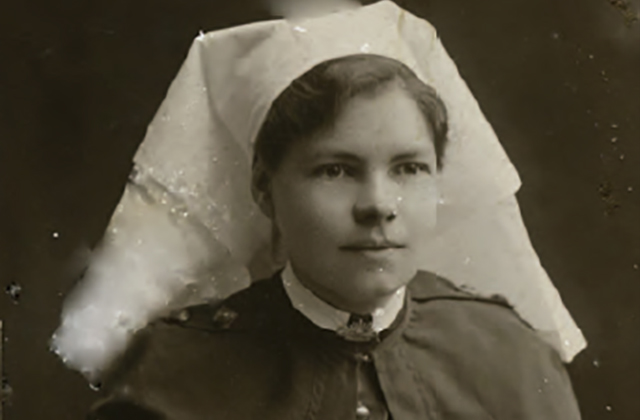
One of the local Wollondilly women caught up in WWI
Opened on International Women’s Day, Wollondilly Heritage Centre’s newest exhibition Her War presents the history of WWI through the eyes of local women.
A sister exhibition to the museum’s Boys from Burragorang and Beyond in WWI, Her War tells a significant and very different wartime story. During discussions on how the museum should respond to the WWI centenary it became apparent that while the history of men on the front line was well documented there was little emphasis on the women of the time.
M&G NSW provided funding through the first round of Collection Documentation Grants to The Oaks Historical Society (Wollondilly Heritage Centre) and Camden Historical Society for the project WOMEN OF THE FIRST WORLD WAR.
Kylie Winkworth, Museum Consultant, worked with volunteers from both organisations to identify significant objects held in their collections for proposed exhibitions and publications celebrating women in world war . Through a series of workshops, volunteers developed their skills in researching objects in their collections and creating object files and writing Statements of Significance.
Betty Villy was commissioned to research women on the home front as well as nurses who served on the front line. Betty’s work was published as Red Poppies and the White Waratah; heroines of the Great War from Wollondilly and was the starting point for Her War. The research uncovered so many new and fascinating stories it was decided it merited its own dedicated exhibition. Boys From Burragorang & Beyond opened in 2015 and the work on Her War began.
Divided into three sections—Patriotic Woman the Red Poppies and the White Waratahs—the resultant exhibition tells of story of the women behind the patriotic push to support the British Empire and their loved ones on the front line. Family letters and postcards reveal the confusions and contradictions in the lives of families in small towns and villages in Wollondilly during and after the Great War.
“We looked at what we already had in the collection and what would be needed to create an exhibition” explains Doreen Lyon, curator at the Heritage Centre. A vital component of the exhibition are letters donated by local families that document both life at home and abroad. One of these collections are letters to a local soldier, Frank Cabrera, sent to him in Europe between 1918-1919. These have been lovingly kept by his daughter and museum staff re-examined them to gain an understanding of women’s perspectives of the war. “The letters were read over and over to extract a theme; initially it was how women on farms and villages coped while their men were away and the exhibition certainly tells some of these stories. But another story emerged of the efforts of women in the British Empire to encourage and support the patriotic push.”
These letters are supplemented with scrapbooks, children’s story books and souvenirs to tell rich stories of the women of Wollondilly; the Red Poppies who served as nurses on the front line, the White Waratahs who stayed at home sending support from afar and the war that changed all their lives.
Lyon hopes the exhibition “will make people respond to the stories by questioning the relevance of war and the effects on civilians and families caught up in it, but also on the resilience of women and how they coped with all sorts of problems and grew in response.”
Her War and Boys from Burragorang and Beyond in WWI are both showing at the Wollondilly Heritage Centre.




